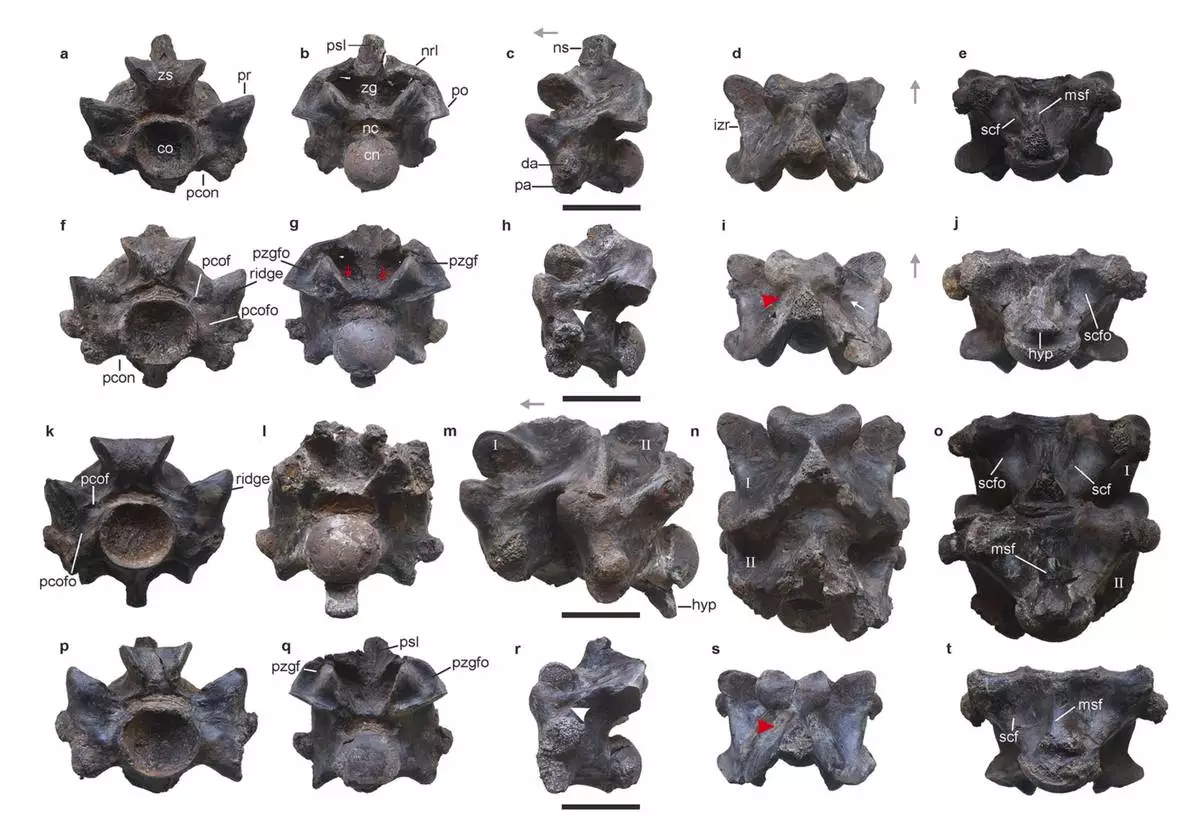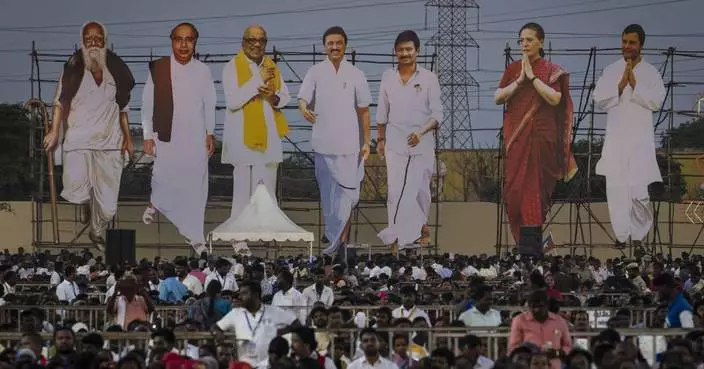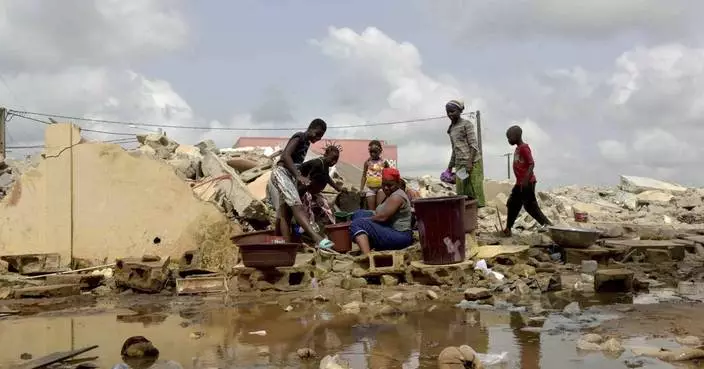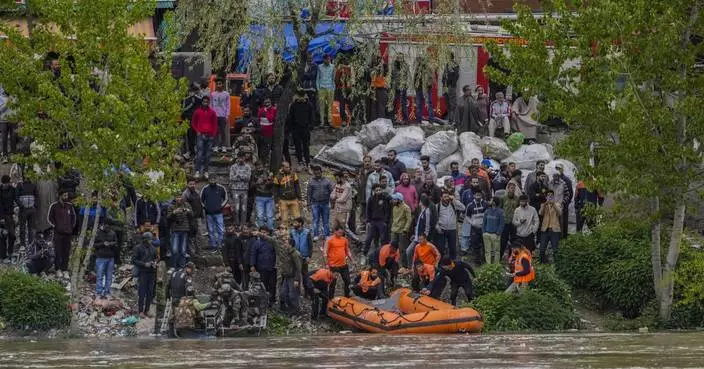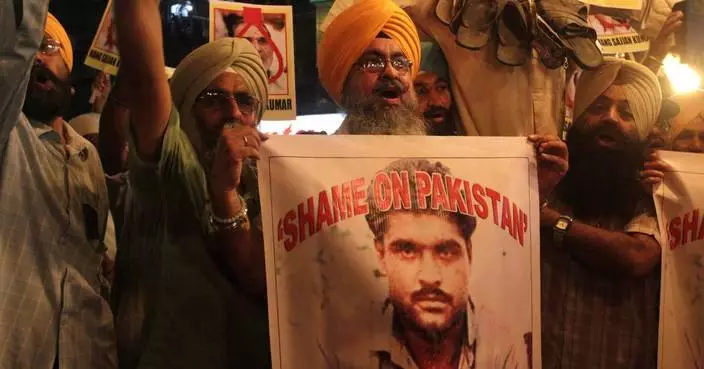Police in India's capital said they found 11 bodies at a home under mysterious circumstances on Sunday, including 10 that were blindfolded and hanging.
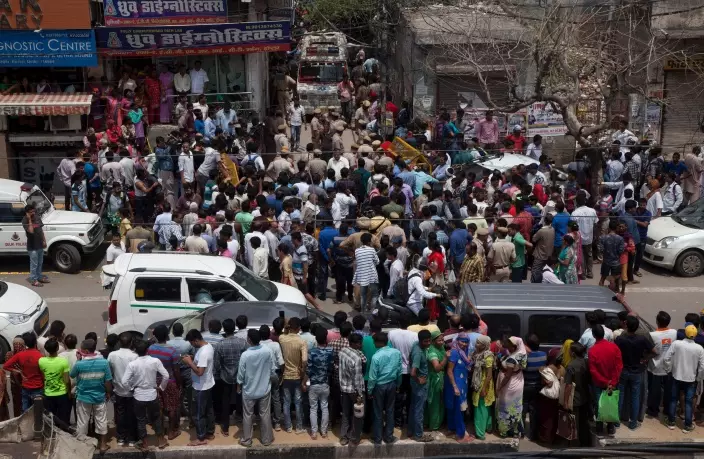
Pedestrians gather near the house where Indian police found 11 bodies in Burari village, north Delhi, India, Sunday, July 1, 2018.(AP Photo/Rishabh R. Jain)
The victims were all from the same family and most had lived in the home where they were found in Burari village in the northern part of New Delhi, said police officer Vineet Kumar.
During a search of the house, handwritten notes were found that point "toward observance of some definite spiritual or mystical practices by the whole family," police said in a statement.
"Coincidentally, these notes have strong similarity with the manner in which the mouths, eyes etc of the deceased were tied and taped," the statement said. It didn't elaborate.
Kumar said police began their investigation after they received a call Sunday morning that some "members of a family have committed suicide."
But he said that no suicide note was found, and that police were investigating whether the victims — a 77-year-old woman, her two sons and their wives, a daughter and five grandchildren — died by suicide or were killed.
There were no bullet marks on the victims' bodies and there was no sign of forced entry into the house, Kumar said. "We're yet to reach any conclusion whatsoever," he said.
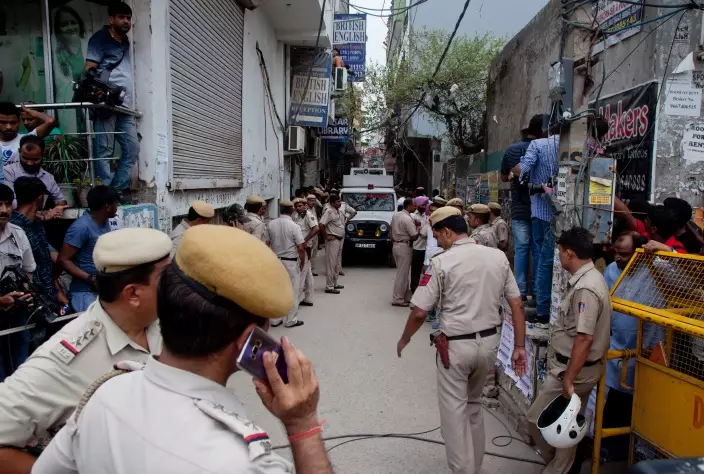
India Police next the house where 11 bodies were found in Burari village, north Delhi, India, Sunday, July 1, 2018. (AP Photo/Rishabh R. Jain)
Police said in their statement later Sunday that a murder case had been registered, though a police official said both murder and suicide were being investigated.
The statement said that the house had not been ransacked, and that no valuables were found to be missing.
Ten bodies, blindfolded by cotton and pieces of cloth, were found hanging from an iron grill used as a ventilator in the home's courtyard, while the body of the 77-year-old woman was lying on the floor of the house, said the police official, who spoke on condition of anonymity because he was not authorized to talk to reporters.
The family had lived in the house for more than two decades, the Hindustan Times newspaper reported. It said the house belongs to a businessman who ran a plywood shop and dairy.
The newspaper said that at around 8 a.m. Sunday, a neighbor with whom the businessman used to go for morning walks went to see him and found the door of the house open and the 10 people, including the businessman, hanging. He raised an alarm and people called the police.
Arjun Thukral, a relative of the family who lives in the same neighborhood, said he ran to the victims' house as news of the deaths spread.
"I saw the bodies hanging, stools lying around, and my wife's aunt sprawled on the floor by the bed. I couldn't bear watching anymore," he said.
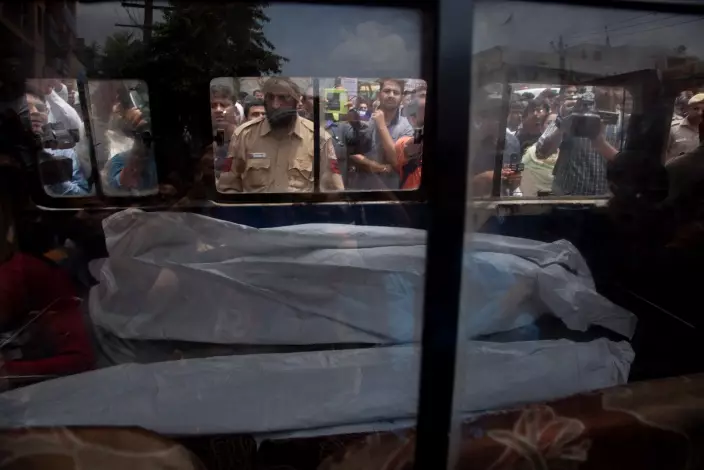
An ambulance carries one of the 11 dead bodies found in Burari village, north Delhi, India, Sunday, July 1, 2018. (AP Photo/Rishabh R. Jain)
Thukral questioned whether the family had died by suicide.
"No father can kill his own son. ... How would a mother be able to kill her own children? I don't think they committed suicide. These are murders," he said.
New Delhi Chief Minister Arvind Kejriwal, who visited the scene, called the incident "tragic."
"Police are investigating. ... Let's wait for their investigation to be over," he said.
In a video posted on Twitter by Kejriwal's ruling party, the neighbors are heard telling Kejriwal that the family was busy with wedding preparations.
A neighbor of the family said they couldn't have died by suicide, New Delhi Television reported. The neighbor said he spoke to one of the victims Saturday night and found no sign of any stress, the report said.
Indian TV channels broadcast interviews with neighbors who said the family did not have any discord among themselves.
Police official Rajesh Khurana told reporters that all angles were being investigated. "We can't rule out anything," he said.



